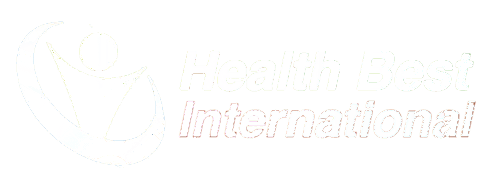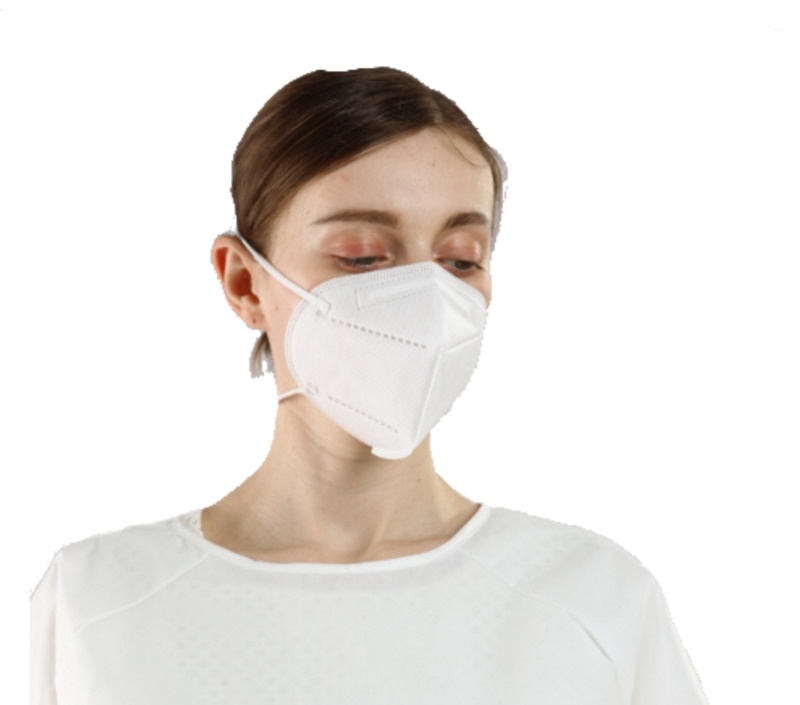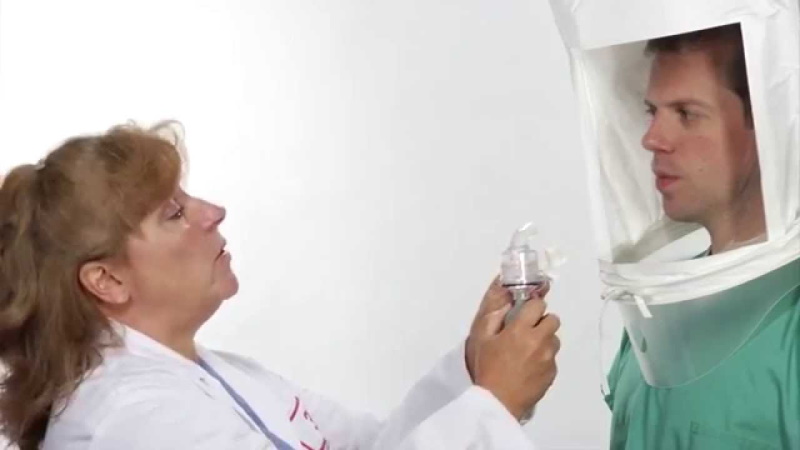

The Truth – Shedding Light On PPE
Respirator Mask Fit Testing
By the HBI Editorial Staff - September 16, 2020


OSHA Fit Testing Video

Respirator Mask Fit Testing
Up until recently, most of us didn't need to know much about respiratory masks. Mines, manufacturers, construction, and places with flying particles and toxicities in the air, but otherwise, mostly irrelevant to us.
While impacting healthcare in particular, nearly every employer and workplace is subject to regulatory requirements and at legal risk for the decisions they make and obligations to perform specific duties. And it can be overwhelming with federal regulations and over half of the states having their own regulations.
Introduction
In this article, we'll cover “Fit Testing”. Required in any workplace where masks are required, strongly recommended where they're voluntarily used (it's of benefit to employees and a solid step towards mitigating legal liabilities). An introduction and overview to the specific steps required by OSHA.
What is Fit Testing
A simple process to confirm the mask each person has chosen is correctly performing and properly sealing on their face. But "very specific". "The employer shall conduct fit testing using the following procedures." (OSHA). For the "required steps" click Department of Labor OSHA Fit Testing Procedures.
Two Types Of Tests
Qualtitative, whether the employee can smell one of four specific scents. Quantitative useing a special device to measure filter penetration (leakage).. Here we'll focus on qualitative and welcome any questions related to qualitative.
Is Fit Testing Required/Mandatory
If wearing a mask is required, then fit testing is mandatory as a precursor to wearing one ..."before an employee first starts wearing a respirator in the work environment, whenever a different respirator facepiece is used, and at least annually thereafter." (OSHA).
However, even if employees voluntary choose to wear one it's still a worthy consideration (better protection for employees by ensuring an effective seal and for the employer from potential legal liabilities).
Offering Multiple Masks
Before the fit test commences, as an employer, you're required to offer each employee a choice. OSHA makes this extremely clear. Each employee is to "pick from a sufficient number of models and sizes" one that is "acceptable to them”, and "fits them correctly”. (OSHA)
How many are “sufficient”? Which models? What if someone insists on a poor choice? Just a few of the questions that come up. And here, the answer is simple. Provide options. The effectiveness and comfort of any style or brand of mask differs from person to person with the shape of their face. And giving people a choice is an inexpensive way to help ensure they adhere to policies and wear their masks when needed.
Who Conducts The Test
A trained qualified "administrator" able to work with each employee, one-on-one. Demonstrating wearing the masks, providing explanations and an education, keeping detailed notes, answering questions, and making decisions as they lead each person through the process. Administrators can be in-house or brought in. There's quite a few videos and classes online.
Supplies
Not much required. An enclosure (see OSHA's specs) , distilled water, a mirror, two nebulizers, and the test solution; which "must" be one of four specific substances: sodium saccharin USP (sweet), Bitrex (bitter), Isoamyl acetate (banana flavor), and/or instant smoke (coughing). Note OSHA is very specific on this.
Pre-Testing
The administrator makes sure there’s nothing between the person’s mask and their face. Beards and mustaches can easily prevent a seal. Safety equipment that might get in the way needs to be worn and adapted to.
The process begins with a demonstration and instruction on selecting and wearing a mask, and responsibilities.
Then, one by one working with the administrator, each person holds up each of the choices to their face, rejects those that don’t feel right, picks a preference, ranks the other acceptable(s), practices putting the favored one on and adjusting it, then wearing it for "at least five minutes" while the admin explains additional key points.
Next comes a series of checkpoints to confirm a proper fit. Moving the head around, a bit of speaking, a seal check (click here), (confirming the mask mpact while inhaling or exhaling), and a series of specific one minute physical and breathing exercises without any adjusting of the mask
Following each step, the administrator confirms it’s still comfortable and acceptable. If at any point, the answer is no, the test failed, the next mask is chosen, and the process starts over.
Good To Go?
Hopefully having made it to this point and the mask is confirmed as still comfortable and acceptable, and it's now time to move ahead.
Smell Sensitivity Testing
Since the test relies on whether the person can sense the selected scent while wearing the mask, the first step is to make sure they're smell sensitive to the scent and able to detect it (some people are less able to detect a sweet smell for example).
The process is pretty basic. They place their head inside the test enclosure. The admin sprays in a very mild mix of the scent solution ten times, and asks if they can smell it. If yes, they're sensitive and can proceed to the next step. Otherwise, ten more sprays. If still no, ten more, for a total of thirty.
If after thirty sprays, the individual still can’t sense the scent, they’re considered insensitive and the smell sensitivity testing is tried again using one of the other solutions.
The Actual Fit Test
The actual test is basically a repeat of the smell sensitivity testing in reverse.
This time, the goal is the opposite.
If after thirty sprays the person still can't sense the scent, the test is positive and complete. The mask is recorded as having blocked the scent and formed an adequate seal and fit on the person's face. The fit test is completed.
If however during the thirty sprays, at any time they're able to sense the smell, the mask is allowing a gap in between the face and isn't sealing properly. The mask is recorded as failed, set aside, and the testing is repeated with thenext mask in line.
Other Considerations
As you will note, this isn't a difficult or highly scientific exploration, nor expensive or time consuming (OSHA estimates 15 to 20 minutes).
The employee is only allowed to wear only the specific make, model, style and size mask recorded they wore while passing a fit test (within the prior twelve months). If anyone changes to a different mask, or anything occurs that might affect wearing it (e.g. growing a beard, signifigant weight gain, dental work, surgery, etc.), they need to be fit tested again.
Be sure to work with a qualified administrator.
Follow the DOL’s process or other vetted steps, exactly to the letter. Afterward, confirm with each person that they understood the instructions and all their questions were clearly answered.
Make sure detailed notes were taken during the test and while on the job (and permanently kept). Be certain anyone having trouble breathing was attended to.
OSHA's links to training sources mentioned above. The National Institute of Environmental Health Sciences, Centers for Disease Control and Prevention, and OSHA's COVID-19 Safety and Health Topics.
Check for other regulations or recommendations for your industry and location, especially if you're in a state with its own regulations.
The Bottom Line.
PPE and respiratory protection is now ingrained into our lives and even our culture. Particularly in the workplace, new procedures need to be adopted and integrated. Making sure masks are properly chosen, worn correctly, properly cared for, and continously in good shape. Keeping up with fit tests for new employees, whenever someone switches to a different mask, and on at a minimum on an annual basis. Referring medical attention and re-evaluating roles whenever anyone experiences difficulties breathing.
As you can see, employers are “fair game” with a lot of legal and regulatory exposures. Considering the level of detail published by OSHA and the DOL, it’s clearly a matter for strict attention, detailed record keeping, and to be taken quite seriously (though written for miners and particulate-rich environments, many of the same rules apply regardless of venue).
Be mindful and adhere to the regs. Offer a selection so it’s the employee that chooses what’s best for them. Sooner or later someone may claim they became ill because they were told which mask to wear, weren’t given a choice, or something was missed that their employer was legally responsible for, At end of the day, along with paying the salaries and keeping the money coming in, as an employer you're on the hook and the responsibility is yours.
Last but not least, keep legal counsel in the loop.
The Authors
Health Best International, a leading supplier of PPE and leading edge technologies.
Our mission is simple. For words like “challenge” and “crisis” to disappear from healthcare conversations..
The article was written by David LeVine, CEO, one of the world’s leading technology visionaries, and Carl Gold, MD, CMO, using publications and other sources, combined with experience.
For more information please visit our website www.healthbestinternational.com, contact us at (754) 666-3717, email Quinn Place qplace@healthbestinternational.com or Dr. Carl Gold at dr.gold@healthbestinternational.com.
References:Department of Labor publication on Respiratory Protection. A “generic, non-exhaustive overview” of a particular topic related to OSHA standards.
